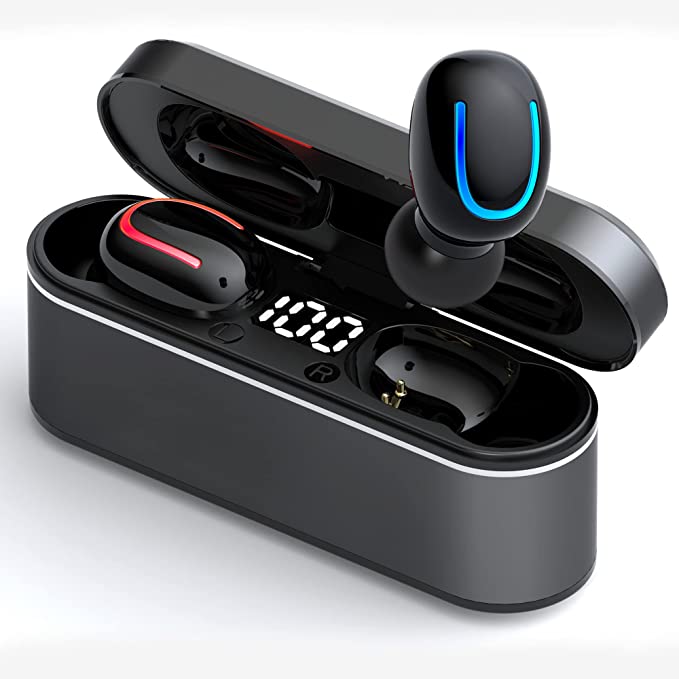RODE Wireless PRO: Crystal-Clear Audio with 32-bit Float Recording and Timecode
Update on Sept. 23, 2025, 6:54 a.m.
A journey into the invisible world of digital clipping, radio chaos, and temporal paradoxes—and the clever science being used to win.
There’s a ghost that haunts every creator. It doesn’t rattle chains or hide in the shadows. It lives in the silence that follows a perfect take—the moment of breathless anticipation right before you press play. You captured it: the unscripted laugh, the emotional breakthrough in an interview, the once-in-a-lifetime wedding vow. The visuals are flawless. But as the audio crackles to life, your heart sinks. The peak of that laugh, the crescendo of that vow, has been transformed into a harsh, ugly distortion. A digital scream. The ghost has struck, and your perfect moment is permanently scarred.
This isn’t a simple malfunction. It’s a fundamental limitation, a ghost born from the very physics of how we capture sound and bottle it into ones and zeros. For decades, audio engineers have been locked in a cold war with this limitation, inventing ever more complex workflows to contain it. But a recent convergence of mathematics, military-grade radio science, and a trick from old Hollywood is finally allowing us to exorcise the ghost for good. This is the story of how we’re learning to record an unbreakable sound wave.

The Tyranny of the Peak and the Digital Ceiling
To understand the problem, you have to picture sound not as a wave, but as water. When we record audio digitally, we are essentially trying to catch this water in a bucket. The process, called quantization, measures the water level thousands of times per second and assigns each measurement a numerical value. The precision of these measurements is determined by the “bit depth.” Think of a 16-bit or 24-bit recording as a bucket with very fine measurement lines etched on its side, but—and this is the critical part—the bucket has a fixed height.
This fixed height is the digital ceiling. As long as the sound—the water—stays within the bucket, everything is perfect. But sound in the real world is unpredictable. A sudden loud noise is a flash flood. It instantly overflows the bucket. This overflow is what engineers call “clipping.” The top of the sound wave, which contains crucial information, isn’t just compressed; it’s sliced off, discarded into a digital void. The resulting waveform looks like it has been flattened by a brick wall, and it sounds just as brutal.
For years, the only defense was vigilance. Sound recordists would ride the gain knob like a jockey, trying to anticipate the peaks, leaving enough “headroom” (empty space in the bucket) to be safe. But this was a constant compromise. Set the levels too low to avoid clipping, and you risk losing quiet details to the noise floor. It was a stressful, unforgiving tightrope walk.

The Magical Expanding Bucket: Escaping the Ceiling with 32-bit Float
What if the bucket didn’t have a fixed height? What if, as the flash flood arrived, the walls of the bucket could magically stretch upwards, containing every last drop? This is the revolutionary concept behind 32-bit float audio.
Instead of using fixed-point integers (the rigid measurement lines on our bucket), 32-bit float uses a system akin to scientific notation, employing a mantissa and an exponent. It doesn’t just record “the water is at 8.75 inches”; it records something more like “the level is 1.2 x 10^3.” This mathematical sleight of hand creates a dynamic range so vast—over 1500 decibels—that it exceeds anything found in our universe, from the quietest whisper in a vacuum to the theoretical roar of a supernova.
In practical terms, the digital ceiling is gone. There is no peak loud enough to cause clipping during the recording phase. A device that implements this, such as the RODE Wireless PRO, isn’t just recording sound; it’s capturing the entire acoustic reality of a moment without judgment. If an actor whispers and then screams, a 32-bit float system captures both perfectly within the same file. In post-production, you can simply slide the entire, pristine recording up or down to the ideal level. The safety net is so absolute that it feels less like an engineering feature and more like a creative superpower.
Herding Radio Waves in a Digital Jungle
Of course, capturing a perfect signal is useless if it can’t get from the microphone to the recorder. This is where we enter the chaotic world of wireless transmission and a battle fought on an invisible field: the 2.4 GHz radio band.
Think of the 2.4 GHz spectrum as a massive, unregulated public highway. It’s free for everyone to use, so it’s incredibly crowded. Your Wi-Fi network is a convoy of trucks. Your Bluetooth headphones are a swarm of motorcycles. Your microwave oven is a sputtering old bus leaking radiation. Now, imagine trying to whisper a secret to a friend across three lanes of this traffic. That’s the challenge for a wireless microphone.
To navigate this digital jungle, modern systems use a technique with a surprisingly glamorous origin. During World War II, Hollywood actress Hedy Lamarr, along with composer George Antheil, patented a “Secret Communication System.” Their idea was to make radio-guided torpedoes immune to jamming by having the transmitter and receiver rapidly and synchronously hop between different frequencies. The enemy wouldn’t know which frequency to jam.
This exact principle, now called Frequency-Hopping Spread Spectrum (FHSS), is the core of robust systems like RODE’s Series IV transmission. The microphone and receiver are constantly performing an intricate, high-speed dance across hundreds of channels, following a pre-agreed pseudo-random pattern. They never stay on a congested frequency long enough to be disrupted, ensuring the audio signal arrives as cleanly as it was captured.

The Universal Clock: Taming the Arrow of Time
There’s one final layer to this puzzle. In any modern production involving more than one camera—or even a single camera with a separate audio recorder—you face a temporal paradox. Each device has its own internal clock, and no two clocks are ever perfectly identical. When you bring them into your editing software, their timelines drift apart, creating a maddening echo of sight and sound.
For decades, the solution was the crude but effective clapperboard. But in the late 1960s, the Society of Motion Picture and Television Engineers (SMPTE) developed a far more elegant solution for editing videotape: timecode. Timecode is, simply, a universal clock. It’s an unrelenting, frame-accurate pulse (measured in Hours:Minutes:Seconds:Frames) that gets permanently stamped onto every video and audio file.
When files with matching timecode are imported into an editor, they snap together like magnets, perfectly synchronized down to 1/30th of a second. This technology, once the exclusive domain of million-dollar broadcast studios, has now been miniaturized and democratized. When a system like the Wireless PRO embeds timecode into its files, it’s not just sending audio; it’s sending a universal truth about when that audio happened, solving the synchronization problem before it even begins.
The Sound of Focus
The ultimate goal of all this brilliant engineering—the infinite bucket of 32-bit float, the secret dance of frequency hopping, the universal pulse of timecode—is, paradoxically, to make the technology disappear. It’s to finally silence the ghost in the machine.
It frees the documentarian to focus on their subject’s story, not on a blinking red light. It allows the indie filmmaker to run a three-camera interview alone, confident that the edit will be effortless. It empowers every creator to chase those fleeting, unpredictable moments of human magic without fear. The greatest technological achievements don’t demand our attention; they earn our trust so completely that they allow us to forget they are even there, leaving us alone with what truly matters: the story we’re trying to tell.






































